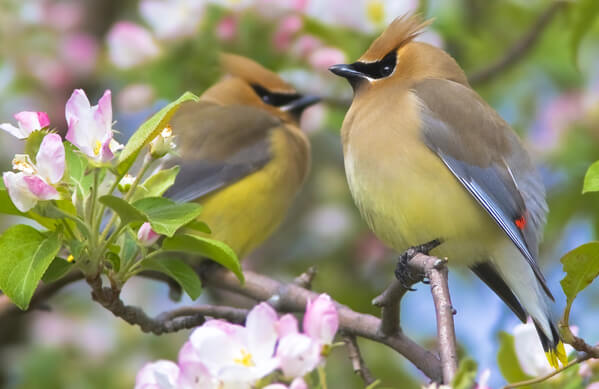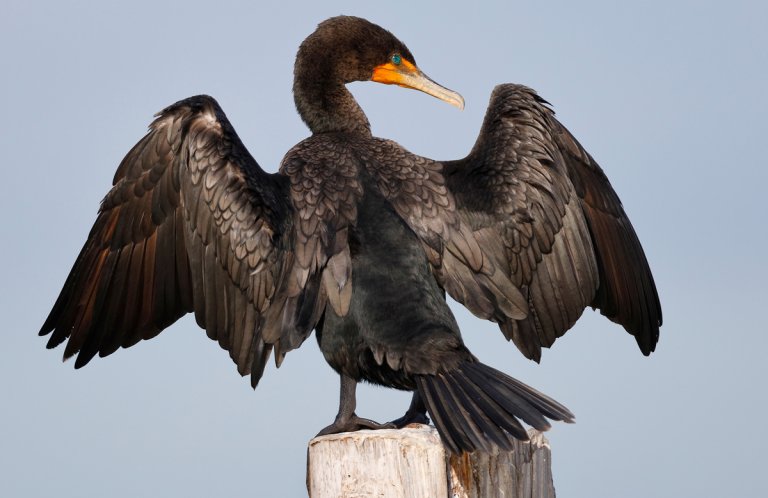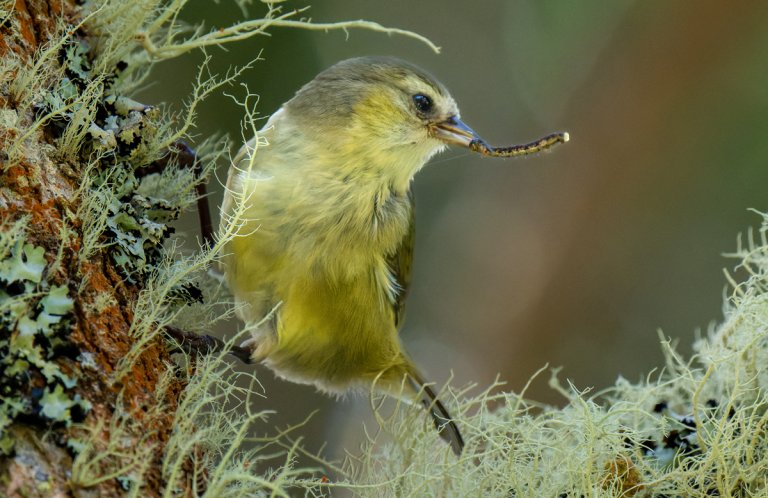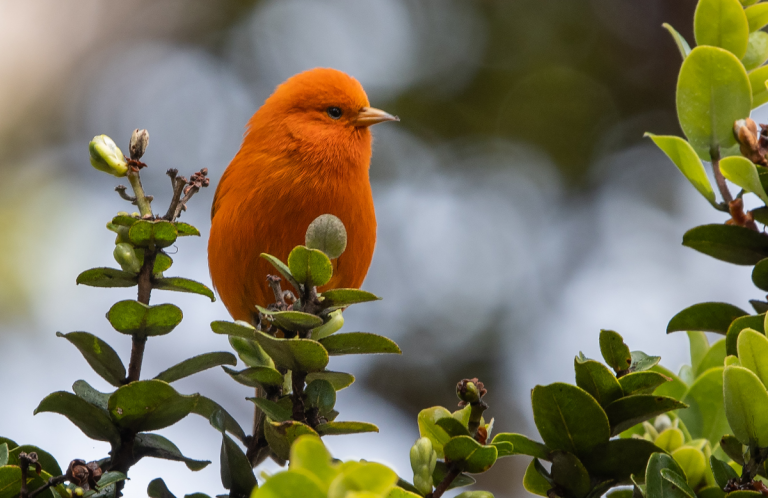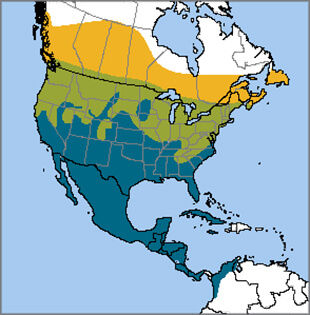
Cedar Waxwing range: Northern areas: breeding | Middle areas: year-round | Southern areas: nonbreeding. Map by NatureServe
A lucky observer may sometimes spot a group of sleek-looking Cedar Waxwings perched on a tree branch in a long row, politely passing a berry from beak to beak, up and down the line. This charming sight reflects the bird's sociable nature; it's almost always seen in flocks, sometimes of up to several hundred birds.
The Cedar Waxwing's genus name, Bombycilla, means "silk-tail" and refers to its dapper-looking plumage. The species name, cedrorum, is Latin for "of the cedars" and reflects its fondness for the small cones of the eastern red cedar.
One of this bird's most distinctive features is the bright-red, waxy tips on its secondary wing feathers, the result of its fruit-heavy diet.
Waxy Wingtips
The "wax" tipping the Cedar Waxwing's secondary wing feathers is actually an accumulation of the organic pigment astaxanthin, a carotenoid that gives red fruits their color. The tips increase in number and size with an individual's age, and immature birds may show no red wingtips at all. Some scientists speculate that waxwings evolved these waxy tips to signal important information — such as age and social status — to other birds within the flock.
The waxwing's striking yellow tail tip is also the result of the carotenoids that color the fruit this species loves to eat. In recent years, waxwings eating the fruits of an introduced honeysuckle have grown orange-tailed tips instead!
Cedar Waxwings breed much later in the year than other songbirds, to coincide with the availability of summer-ripening fruits. When courting, the male waxwing performs a hopping dance for the female; if she's interested, she will dance with him, and the pair hops back and forth together. Courting waxwings will also sit together and pass small objects back and forth, such as flower petals, a berry, or an insect, in a demonstration of their devotion.
Cricket-like Calls
Cedar Waxwings are vocal birds, sounding off with high-pitched, cricket-like whistles and buzzy, ascending trills, often described as "sree." They call constantly, particularly in flight, and are often heard before they are seen.
(Audio: A dozen Cedar Waxwings calling from a eucalyptus tree near San Diego, Calif. Other birds heard in the background: House Finch, Bullock's Oriole, American Bushtit, Common Yellowthroat, Yellow Warbler. Recorded by Paul Marvin, XC307481. Accessible at www.xeno-canto.org/307481. )
This species is nomadic and non-territorial, showing up where food sources are most abundant and then moving on. During winter, Cedar Waxwings often makes irruptive movements depending on food availability, similar to Evening Grosbeaks and crossbills.
Sign up for ABC's eNews to learn how you can help protect birds
Pros and Cons of Fruit Feeding
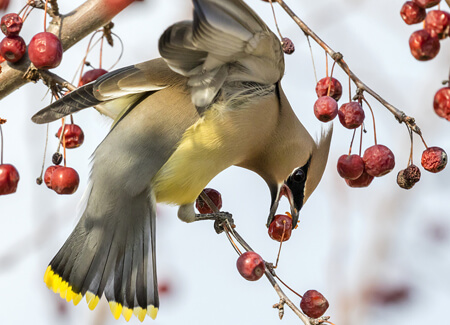
Cedar Waxwing by Ivan Kuzmin, Shutterstock
Cedar Waxwing numbers have grown over the last 20 years, most likely due to the increasing presence of fruiting shrubs and trees in cities and suburbs. The birds specialize in eating sugary fruit, including elderberries, cedar berries, wild cherries, and mulberries. In fact, the species' diet is so fruit-heavy that invasive Brown-headed Cowbird chicks — which require a more varied diet — rarely thrive in a Cedar Waxwing nest.
Like tropical fruit-eating birds such as Golden-headed Quetzal, Banded Cotinga, and Hooded Berryeater, the Cedar Waxwing "gardens" by spreading seeds through its droppings.
Sometimes Cedar Waxwings eat berries that have fermented on the vine, leading to inebriated behavior. Although their antics seem amusing, "drunken" waxwings are more prone to collisions with windows and cat predation. These are among the most common sources of human-caused mortality for the species.
American Bird Conservancy addresses these threats through our Cats Indoors and glass collisions programs. Find ways to make windows safer for Cedar Waxwings and other birds on our Bird-Smart Glass page, and explore information on keeping pet cats happily contained while birds stay safe.
Donate to support ABC's conservation mission!





































